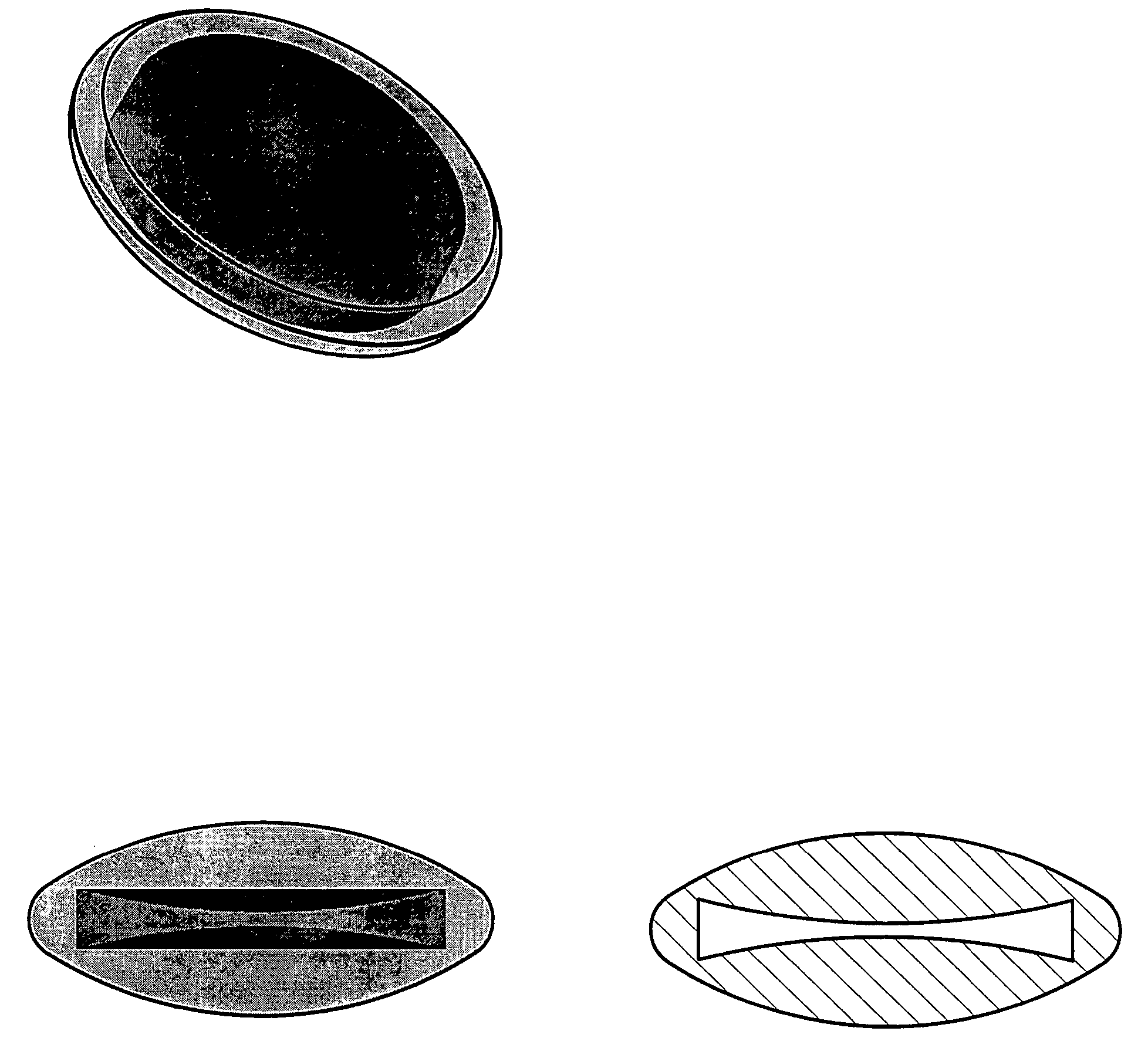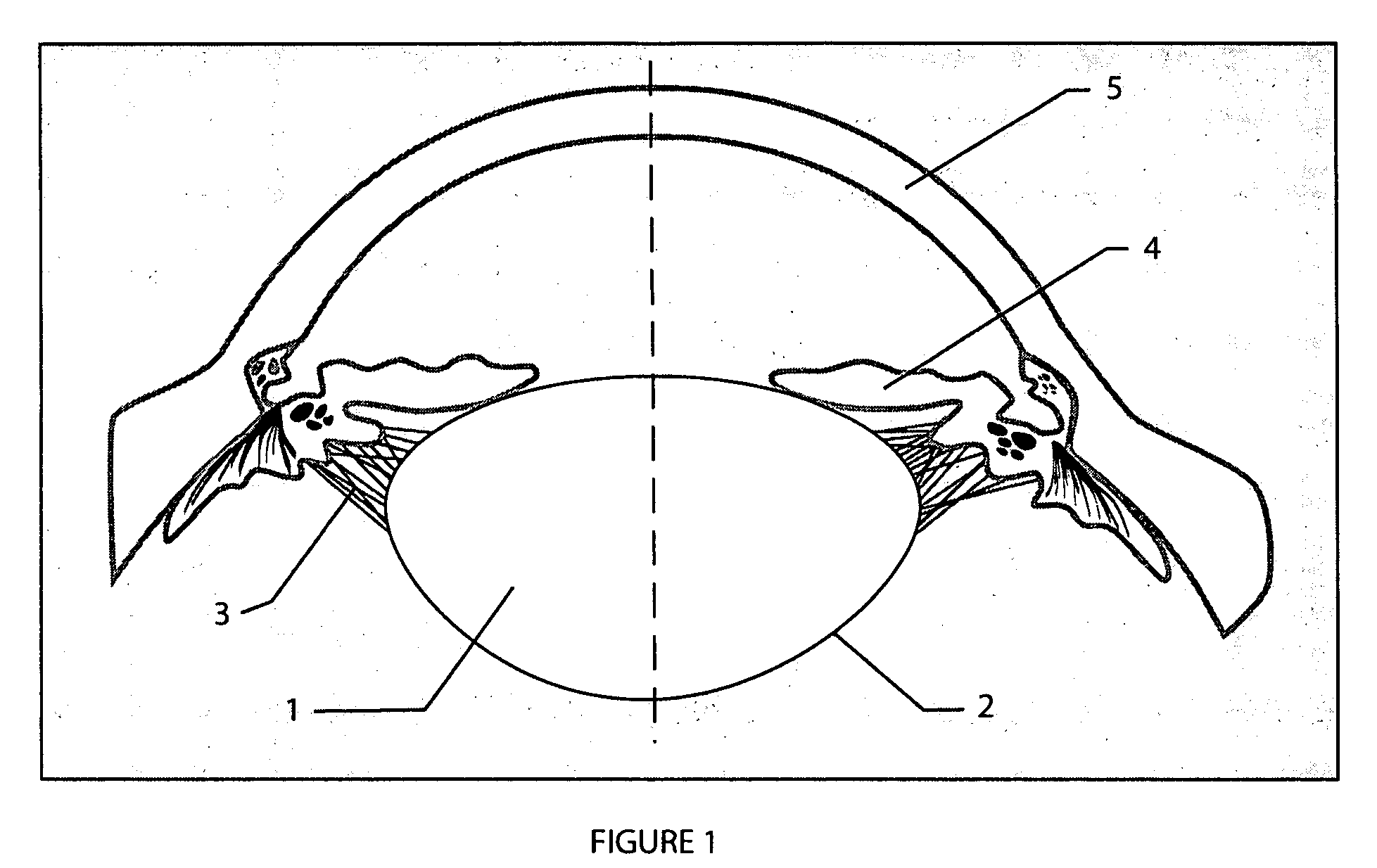Accommodative intraocular lens and method of implantation
- Summary
- Abstract
- Description
- Claims
- Application Information
AI Technical Summary
Benefits of technology
Problems solved by technology
Method used
Image
Examples
example 1
The Preparation of a Synthetic Human Capsule
[0040] A synthetic human capsule (FIG. 11) is made from NuSil MED 6820 silicone. The capsule has an inner equatorial diameter of 9.3 mm, vertical central thickness of 3.8 mm with posterior radius of 7 mm and anterior surface of 10 mm. Both posterior wall thickness and anterior wall thickness is about 0.1 mm, mimicking the natural human capsule. The capsule also has a 3.8 mm capsulorhexis in the central area of the anterior surface. In addition, the capsule has a thin (about 0.1 mm) flange around the equator that can be clamped in a retaining ring to fix the capsule in position. The capsule is transparent, with 99% visible light transmission.
example 2
The Preparation of Accommodative IOLs of Various Dimensions
[0041] Into a fused silica mold is added a pre-gel prepared from the mixture of stearyl methacrylate (54% by weight), lauryl acrylate (45% by weight), and 1% of UV absorber, 2-(2′-hydroxy-5′acryloxypropylenephenyl)-2H-benzotriazole, as well as 0.075% of crosslinker, ethylene glycol dimethacrylate. The mold is placed in a pre-heated oven at 110° C. for 16 hours. After the mold is taken out from the oven and cools down to room temperature, the mold is placed in a refrigerator for about 2 hours. The mold is then opened, and a white or translucent solid IOL is carefully removed from the mold. In this way, two different dimensions of accommodative IOLs are prepared. The first group has a diameter of 9.0 mm, central lens thickness of 3.0 mm, and edge thickness of 1.0 mm with an optical diopter power of 27 D, while the second group has a diameter of 9.9 mm, central lens thickness of 2.3 and edge thickness of 1.0 mm with an optical...
example 3
Accommodation Simulation of the First Group Lens
[0042] The first group lens has its initial diopter power of 27 D (resolution efficiency of 45.1%) measured with a Meclab Optical Bench using 550 nm wavelength light, 150 mm collimator, 3 mm aperture and 1951 US Air Force Target. The IOL has a central lens thickness of 3.0 mm, lens diameter of 9.0 mm, and edge thickness of 1.0 mm, as measured with a Nikon V12 optical comparator. The same measurement method is used for Example 4. After this lens is implanted into the simulated human capsule described in Example 1, the resolution and diopter power are measured again. It is found that the lens in the capsule has changed its diopter power. The new diopter power in the capsule is 30 D, a shift of 3 D from its initial diopter. The resolution efficiency of the lens inside the capsule is 40.3%. The diopter increase in this case is due to the fact that the lens edge thickness (1.0 mm) is larger than its corresponding dimension of the capsule (...
PUM
 Login to View More
Login to View More Abstract
Description
Claims
Application Information
 Login to View More
Login to View More - R&D
- Intellectual Property
- Life Sciences
- Materials
- Tech Scout
- Unparalleled Data Quality
- Higher Quality Content
- 60% Fewer Hallucinations
Browse by: Latest US Patents, China's latest patents, Technical Efficacy Thesaurus, Application Domain, Technology Topic, Popular Technical Reports.
© 2025 PatSnap. All rights reserved.Legal|Privacy policy|Modern Slavery Act Transparency Statement|Sitemap|About US| Contact US: help@patsnap.com



